Table of contents of the article
ToggleBlack mold in grapes is considered a serious fungal disease that affects yield and fruit quality. In this article on your website, WORLD OF PLANTS, we will discuss its causes, symptoms, and the best methods to prevent and combat it.
Symptoms of black mold in grapes
- Scientific name : Black rot of grape
- Type of disease: innate
- The causative fungus Guignardia bidwellii
The first symptoms of the disease appear in the form of small yellow spots on the leaves. As the infection progresses, these spots enlarge, their centers become reddish brown or gray, and their surroundings become dark in color. Black dots appear on the surface of the spots arranged in circular rings, which are the pycnidial vessels of the fungus.
Symptoms can appear on stems and tendrils in the form of oval-shaped spots. Purple to black in colour, sunken on the surface.
Symptoms do not usually appear on the fruits until they reach their normal size (about the size of a pea), in the form of small circular spots, light brown in color with reddish center, and with a purple outline. The spots become soft and sunken, and the infection expands rapidly until the mold covers the entire grain within a few days, whereby the grain takes on a chocolate brown color, then turns to dark brown.
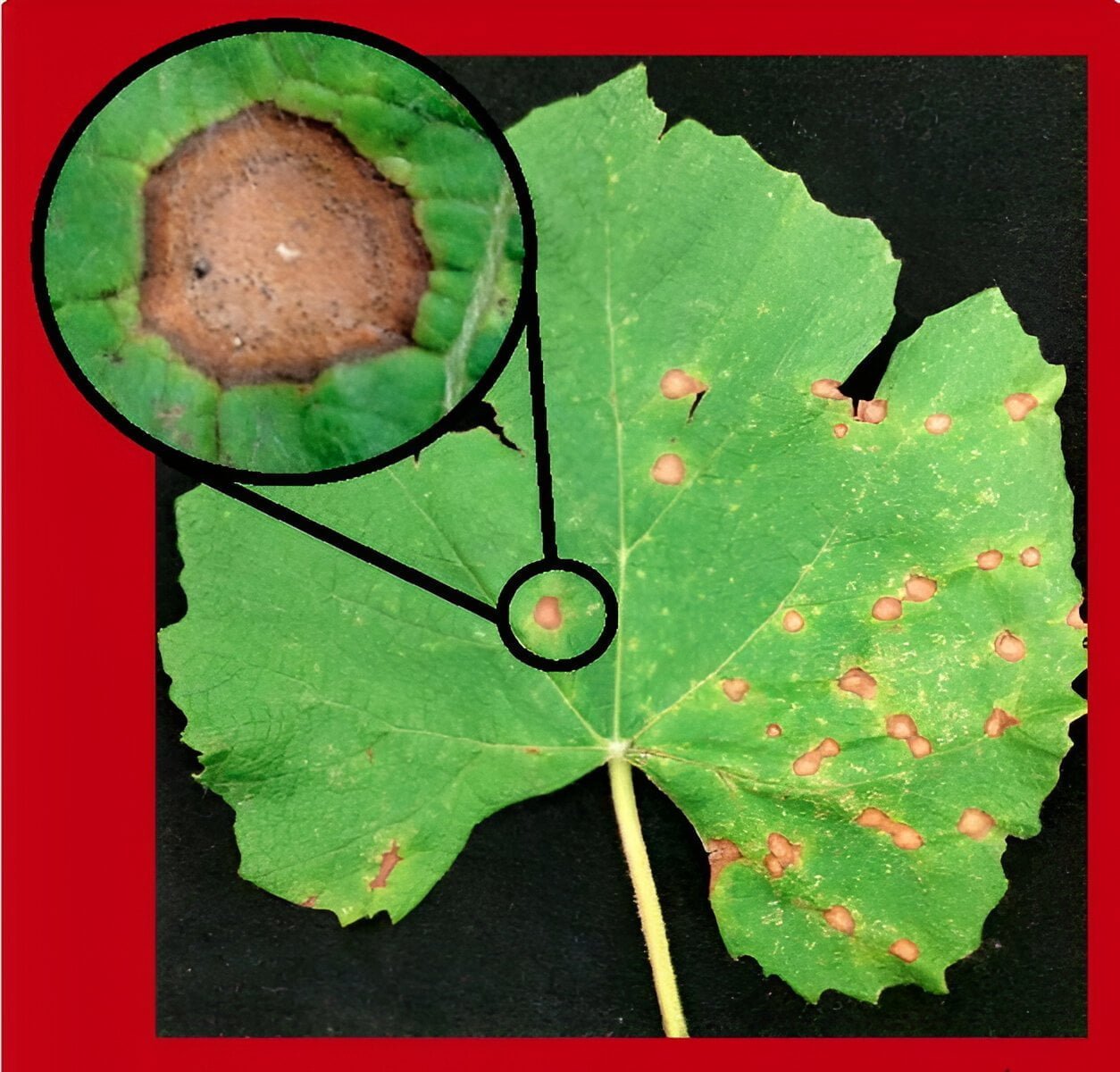
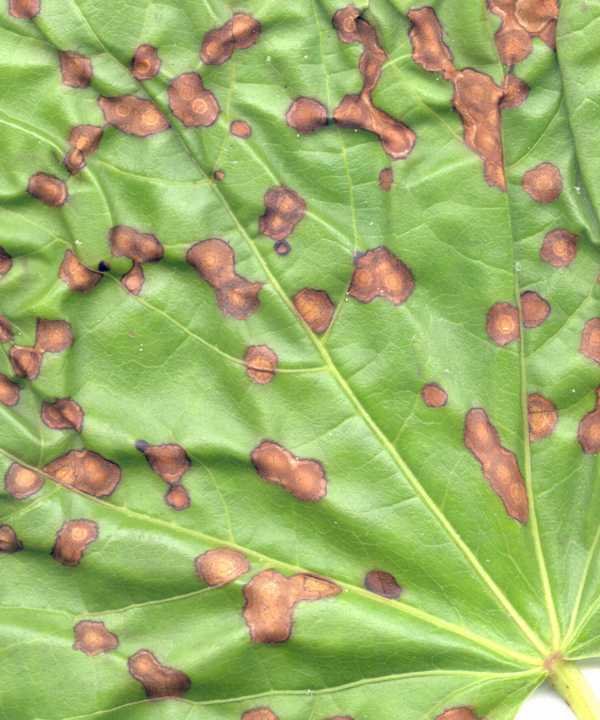
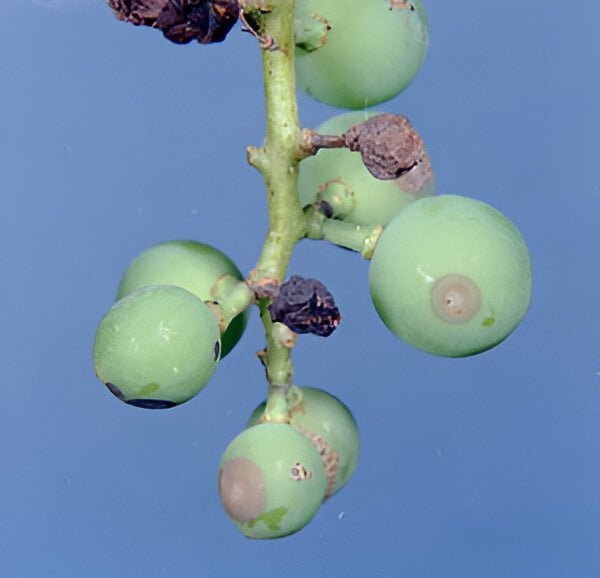
Causes of black mold in grapes
- The development of the disease is associated with warm and humid weather.
- Mummified fruits are an important source of primary infection in the spring
- Cultivation of sensitive varieties.
- Spores are transmitted by air currents
- For infection to occur, a film of water must be present on the surface of the plant tissue
Suitable conditions for the spread of black mold in grapes
- At temperatures ranging from 60 to 85 degrees Fahrenheit
- High humidity
Development cycle of black mold in grapes
The fungus spends the winter in the form of spores inside the vessels formed on the infested areas on the stems and tendrils, as well as on decaying fruits.
The ascospores are ejected forcefully, while the pycnidia come out in the form of a sticky spore gel that is washed off with rainwater.
Infection occurs with both types of spores on young leaves and on clusters
Then, pycnidid vessels form on the formed spots, from which pycnidid spores are released, which are responsible for the occurrence of secondary infections on clusters and other plant parts.
Losses of black mold spread in grapes
Infected fruits become shrunken, wrinkled, black and dry, turning into mummified fruits.
High economic losses.
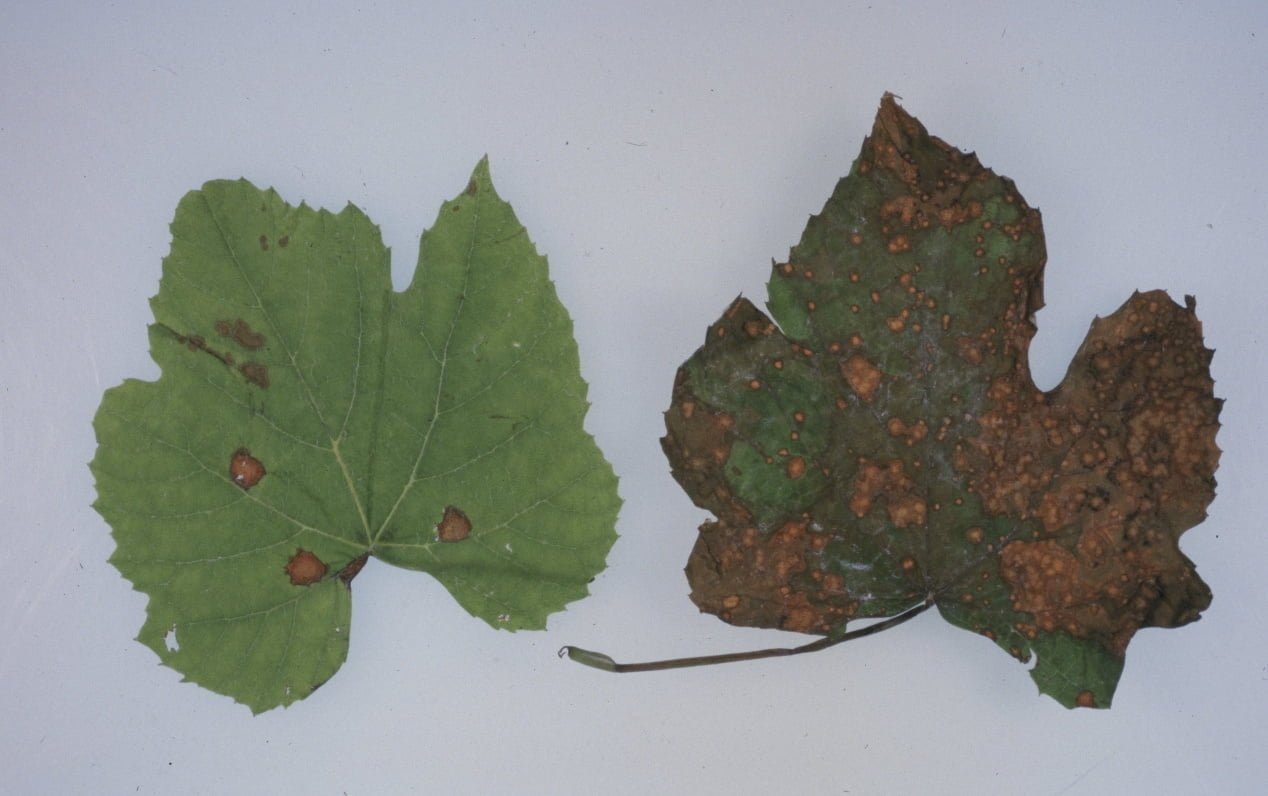
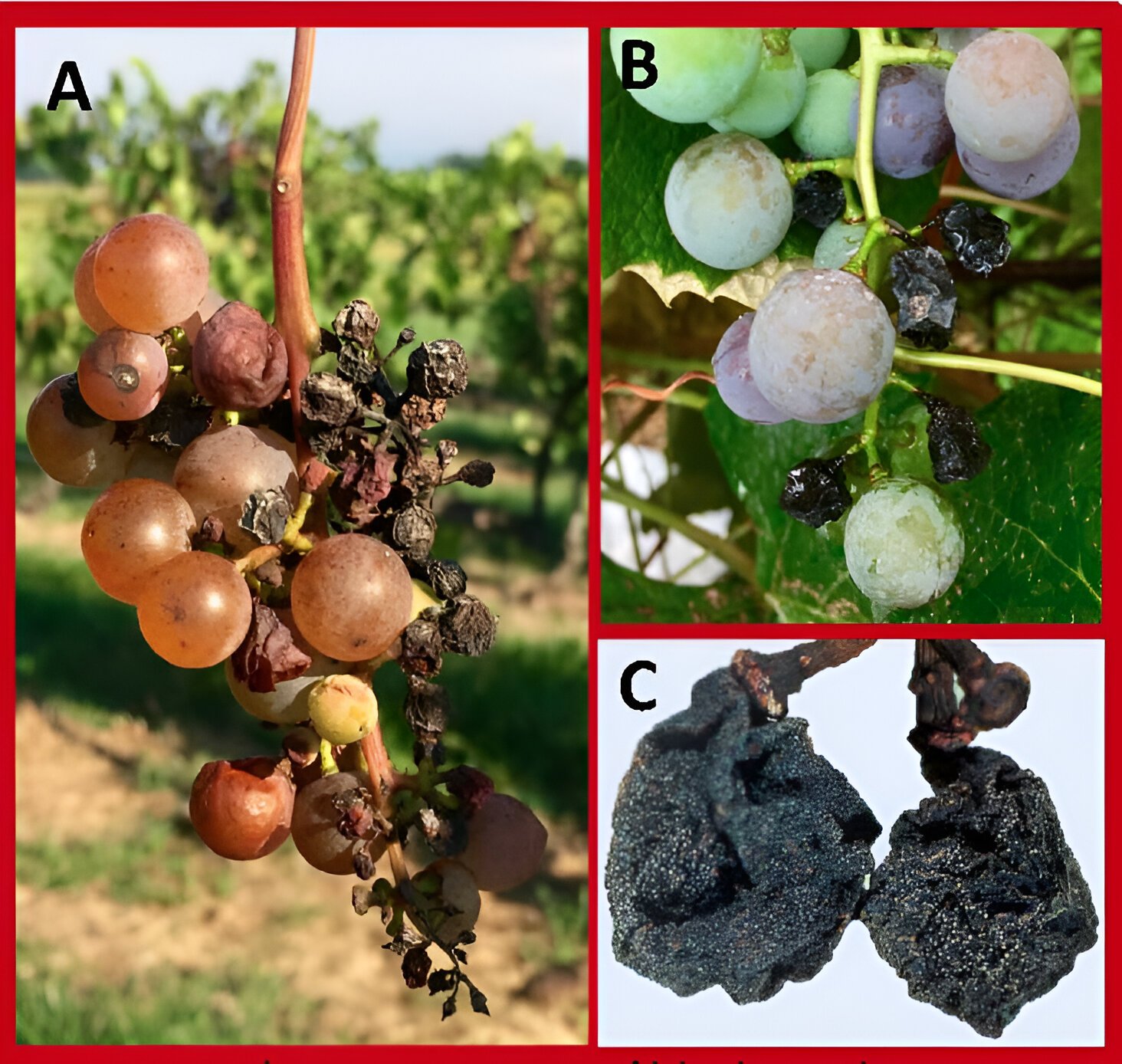
Control strategy for black mold in grapes
Preventive measures to prevent the occurrence of the disease
Choose a sunny location that allows good air movement. Orient rows with prevailing winds to allow plants to dry quickly during wet weather.
Remove diseased fruits when they are first noticed.
Good pruning and good ventilation. Remove infected and mummified clusters during the dormant phase of the plant.
Remove infected leaves in the fall and spring before the end of the dormant phase.
Organic control of black mold in grapes
- Organic control of black mold in grapes
- Planting resistant varieties
Chemical control of black mold in grapes
Spraying infected trees with one of the following compounds
- Pyraclostrobin + Boscalid (Belly's-Wheels-Muffin)
- Difenoconazole + azoxystrobin.
- strobilurin (Flint)
In conclusion, we would like to note that we, at the world of plants website, offer you all the necessary services in the world of plants, we provide all farmers and those interested in plants with three main services::-
- Artificial intelligence consulting service to help you identify diseases that affect plants and how to deal with them.
- Blog about plants, plant diseases and care of various crops ... You are currently browsing one of her articles right now.
- An application that provides agricultural consultations to clients, as well as a service for imaging diseases and knowing their treatment for free – Click to download the Android version from Google Play Store، Click to download the IOS version from the Apple App Store.
References:
- Molitor, D., & Beyer, M. (2014). Epidemiology, identification and disease management of grape black rot and potentially useful metabolites of black rot pathogens for industrial applications – a review. Annals of applied biology, 165(3), 305-317
- Kellner, N., Antal, E., Szabó, A., & Matolcsi, R. (2022). The effect of black rot on grape berry composition. Acta Alimentaria, 51(1), 126-133
- Reddick, D. (1909). The black rot disease of grapes. Cornell University
- Epidemiology, identification and disease management of grape black rot and potentially useful metabolites of black rot pathogens for industrial applications – WILEY ONLINE LIBRARY
- The effect of black rot on grape berry composition – akjournals
- The Black Rot Disease of Grapes – google books




